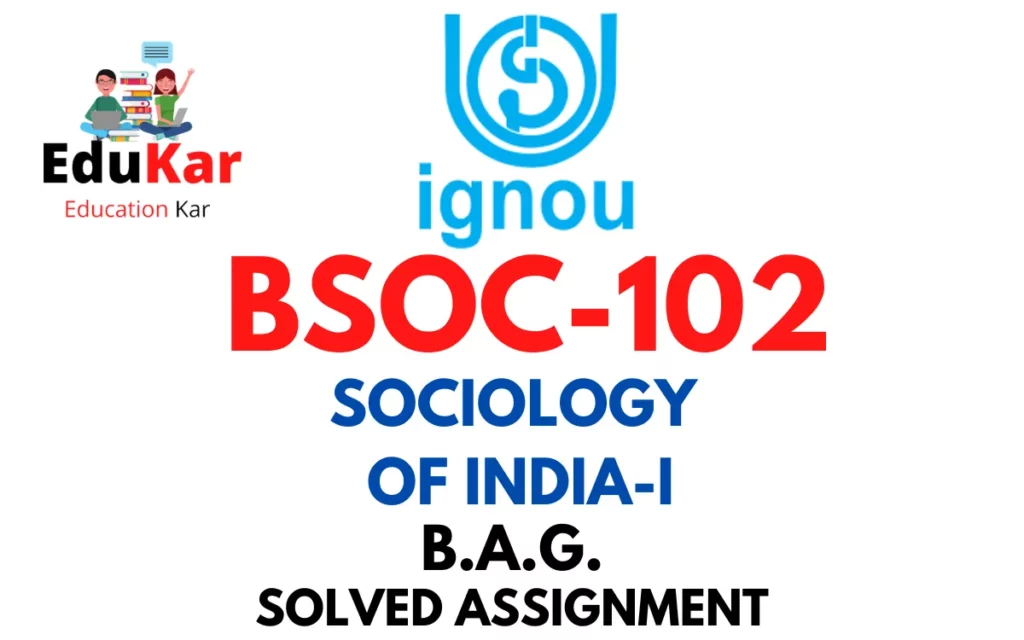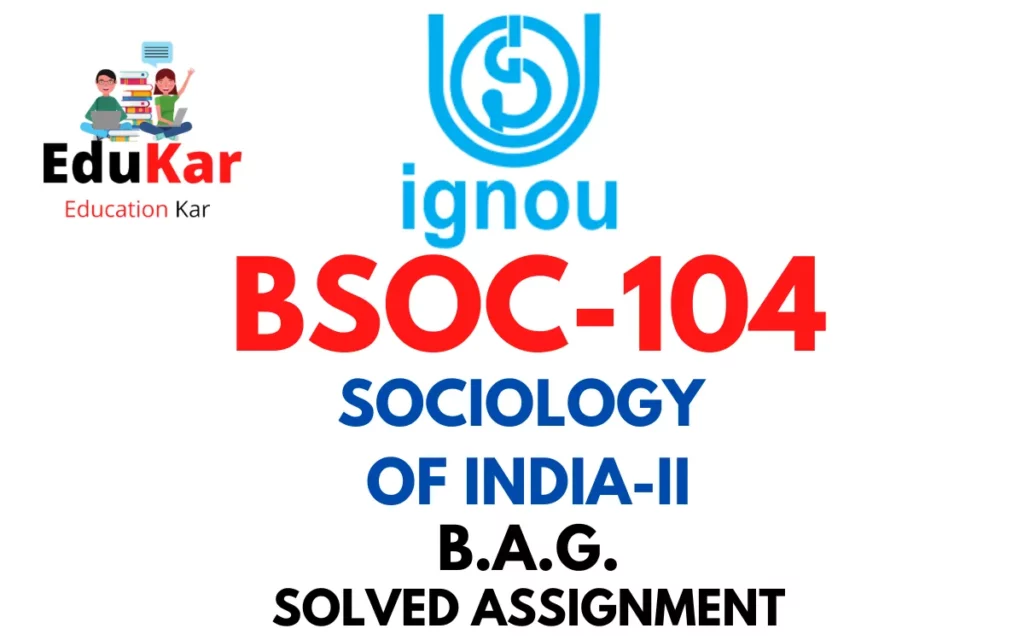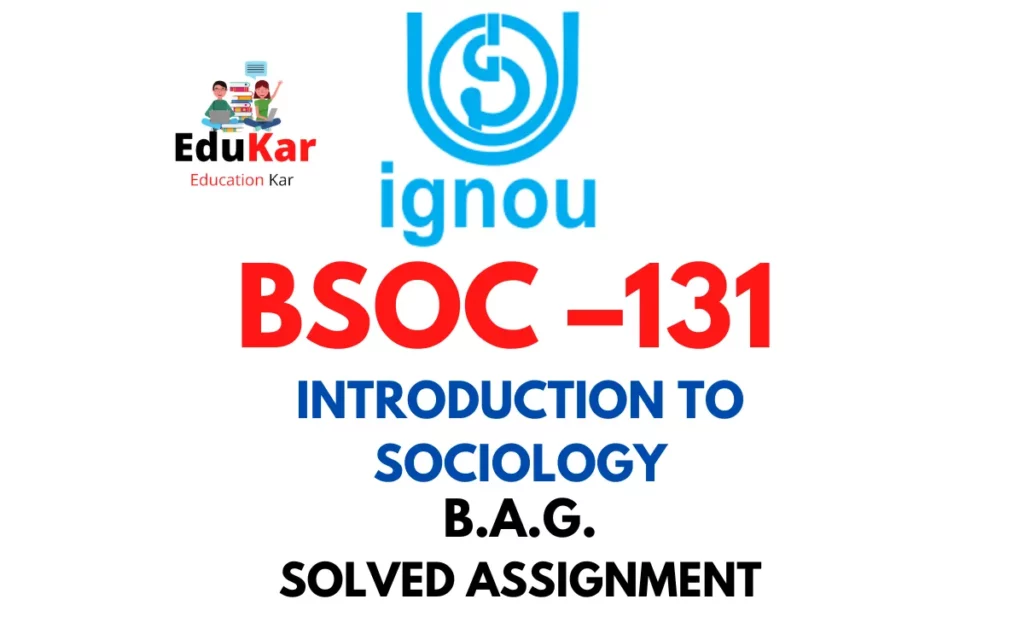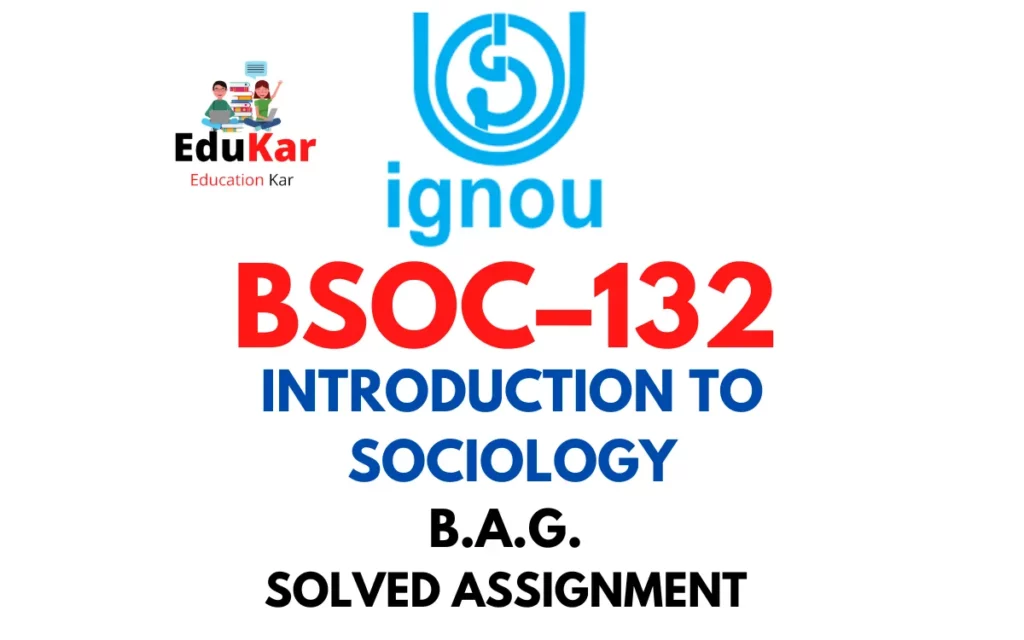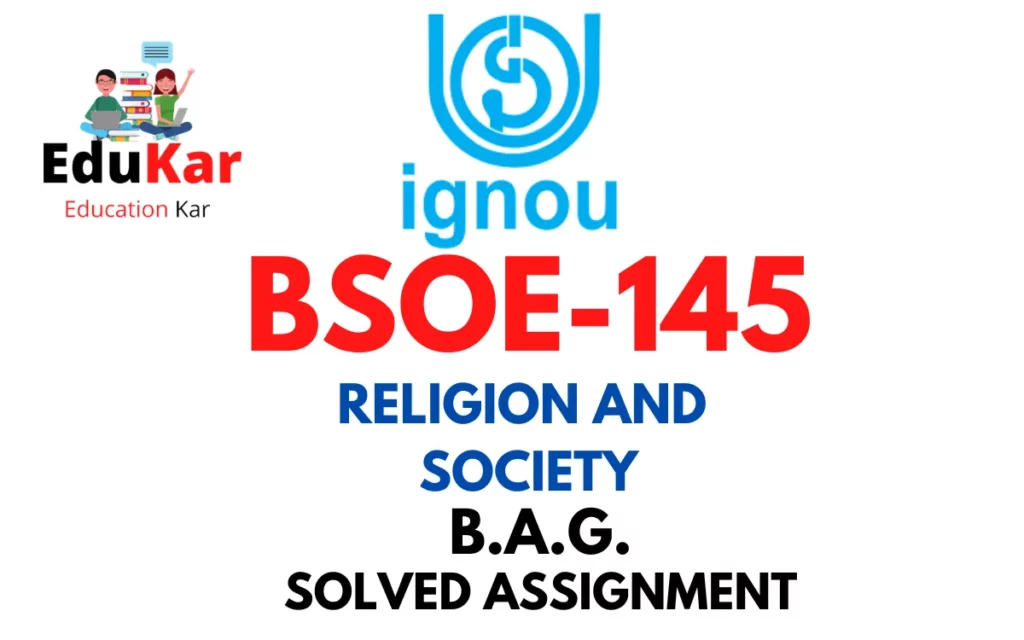Contents
- 1 Assignment – I
- 2 Answer the following in about 500 words each. (Answer any two questions from this section.)
- 3 1. Discuss the various sources for the reconstruction of the social history of the period from 700 to 1200 CE. 20
- 4 2. Evaluate the formation and expansion of the Rashtrakuta Empire.
- 5 3) Write an essay on Gupta administration.
- 6 Assignment – II
- 7 Answer the following questions in about 250 words each.
- 8 4) Describe the Chola administration in detail.
- 9 5) Write a note on the post-Gupta economy.
- 10 6) Explain the various theories of the Rise of Rajputs.
- 11 Assignment – III
- 12 Answer the following questions in about 100 words each.
- 13 7) Pallava art and temple architecture
- 14 8) Chalukyas of Badami
- 15 9) Property Rights of women
- 16 10) Bhakti Movement
- 17 11) Sculpture

| Title | BHIC-132 |
| University | IGNOU |
| Degree | Bachelor Degree Programme |
| Course Code | BHIC-132 |
| Course Name | HISTORY OF INDIA FROM C. 300 C.E. TO 1206 |
| Programme Name | Bachelor of Arts (General) |
| Programme Code | BAG |
| Total Marks | 100 |
| Year | 2022-2023 |
| Language | English |
| Assignment Code | BHIC-132/ASST/TMA/2022-23 |
| Last Date for Submission of Assignment: | For June Examination: 31st March For December Examination: 30th September |
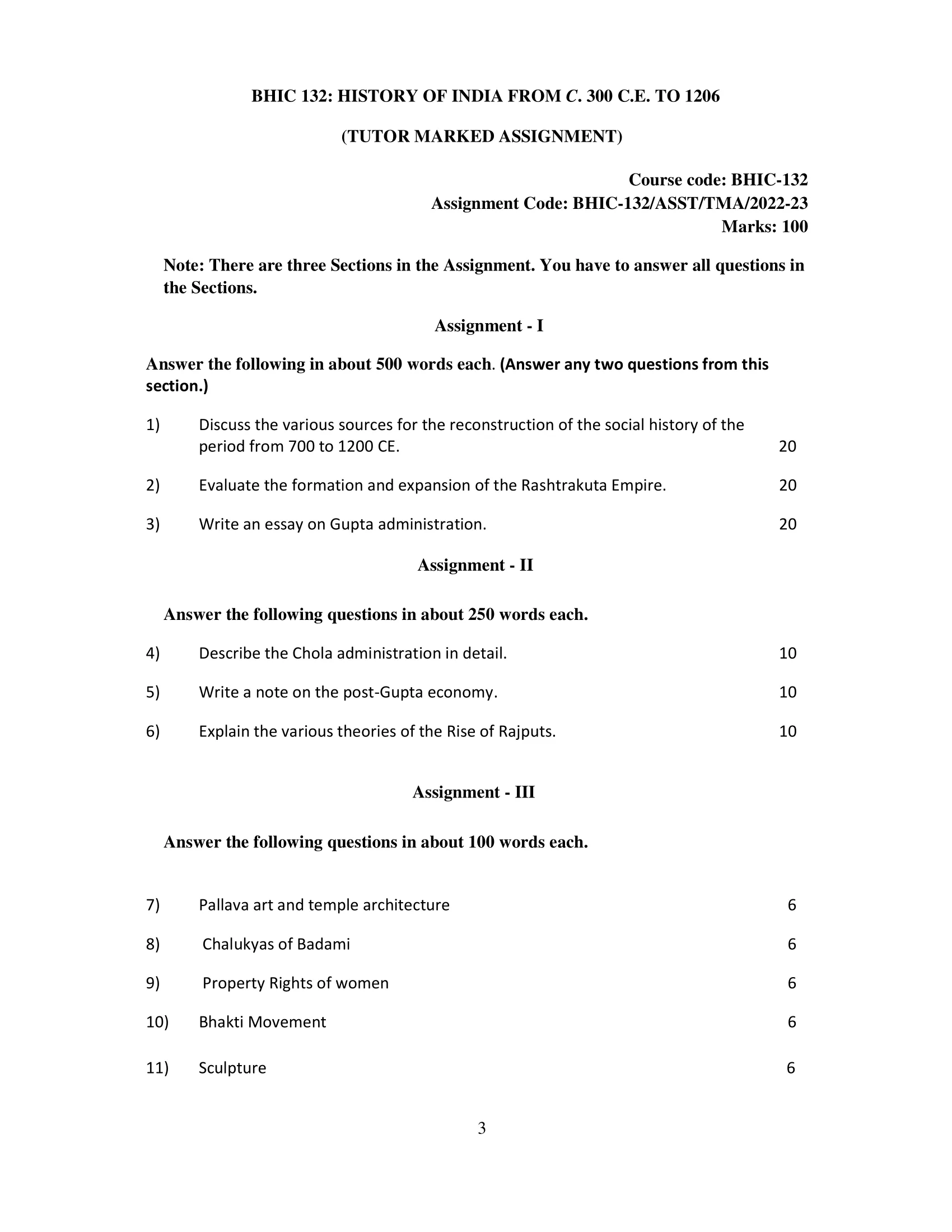
Assignment – I
Answer the following in about 500 words each. (Answer any two questions from this section.)
Ans: The period from 700 to 1200 CE is often referred to as the “Medieval Period.” This era was marked by great changes in Europe and the wider world, including the decline of the Roman Empire, the rise of the Islamic Caliphate, and the emergence of feudalism. In order to understand the social history of this time, historians have relied on a variety of sources, including written records, archaeological evidence, and artistic depictions.
Written records are one of the most important sources for reconstructing the social history of this period. These records include chronicles, annals, and administrative documents, such as land grants and tax records. These written sources provide valuable information about the political, economic, and social structures of the time, as well as the daily lives of the people. For example, chronicles written by monks give us a glimpse into the religious and cultural practices of medieval Europe, while administrative records provide insights into the organization of feudal society.
Archaeological evidence is also an important source for reconstructing the social history of this period. Archaeologists study the remains of buildings, fortifications, and other structures to gain an understanding of the architecture and design of medieval society. They also examine artifacts, such as ceramics, jewelry, and weapons, to learn about the materials and technology used in daily life. For example, the excavation of a medieval town can provide information about the layout of streets and buildings, as well as the types of goods traded and manufactured in the area.
Artistic depictions, such as illuminated manuscripts and sculptures, are also valuable sources for reconstructing the social history of this period. These works of art often provide vivid representations of the people, landscapes, and events of the time. For example, illuminated manuscripts depict religious scenes, portraits of rulers, and images of everyday life, giving us a glimpse into the beliefs, customs, and values of medieval society. Similarly, sculptures and other works of art offer insights into the art and architecture of the period, as well as the role of artists and patrons in shaping cultural life.
In addition to these traditional sources, recent advances in technology have made it possible to use new methods to study the social history of this period. For example, DNA analysis can be used to learn about the genetics and ancestry of medieval populations, while remote sensing techniques can be used to study the layout and topography of medieval settlements. These new methods offer new insights into the history of this time, and provide a more comprehensive understanding of the social, cultural, and economic life of medieval societies.
2. Evaluate the formation and expansion of the Rashtrakuta Empire.
Ans: The Rashtrakuta Empire was a powerful Indian dynasty that rose to prominence in the 8th century CE and lasted until the 10th century CE. The empire was founded by Dantidurga and expanded rapidly through the efforts of his descendants, who conquered and ruled over vast territories in India and beyond. Despite its short lifespan, the Rashtrakuta Empire left a lasting impact on Indian history and played a key role in shaping the cultural and political landscape of the region.
The formation of the Rashtrakuta Empire was marked by a period of political instability and conflict in India. At the time, the country was divided into several smaller kingdoms, each ruled by a powerful king or dynasty. Dantidurga emerged as a powerful figure and was able to unify these kingdoms under his rule, creating the Rashtrakuta Empire. He was succeeded by his son, Krishna I, who is regarded as one of the greatest kings of the Rashtrakuta dynasty. Under his rule, the empire expanded rapidly, conquering neighboring kingdoms and establishing control over large parts of India.
One of the key factors that contributed to the success of the Rashtrakuta Empire was its military prowess. The Rashtrakutas were known for their highly organized and well-trained army, which was able to defeat rival kingdoms and establish control over new territories. They also made use of innovative military strategies and tactics, such as the use of elephants in battle, which gave them a distinct advantage over their enemies.
In addition to their military strength, the Rashtrakutas were also known for their cultural and artistic achievements. They were patrons of the arts, and their reign saw the creation of numerous works of art, architecture, and literature. The Rashtrakuta capital, Manyakheta, was a major cultural center, attracting artists and scholars from across India and beyond. The dynasty also supported the development of Buddhism, Hinduism, and Jainism, and made significant contributions to religious architecture, including the construction of temples and monasteries.
The Rashtrakutas were also known for their administrative and governance skills. They established a highly centralized and efficient administrative system, with a well-organized bureaucracy and a system of tax collection. This helped to ensure the stability and prosperity of the empire, and enabled them to effectively manage their vast territories.
Despite its impressive achievements, the Rashtrakuta Empire eventually declined and fell in the 10th century CE. There are several reasons for this, including internal conflict, economic struggles, and the rise of rival kingdoms. Nevertheless, the legacy of the Rashtrakutas lives on, and their achievements continue to influence Indian history and culture to this day.
3) Write an essay on Gupta administration.
Ans: The Gupta Empire, which ruled India from the 4th to the 6th centuries CE, is widely regarded as one of the most prosperous and stable periods in Indian history. One of the key factors that contributed to the success of the Gupta dynasty was its highly efficient and effective administration. The Gupta administration was characterized by a well-organized bureaucracy, a strong central government, and a decentralized system of governance that gave local officials significant autonomy.
The Gupta administration was headed by the emperor, who was the supreme authority in the empire. He was assisted by a council of ministers, who were responsible for advising the emperor on important matters of state. The empire was divided into provinces, each of which was governed by a governor appointed by the emperor. The governors had significant powers, including the authority to collect taxes and maintain order in their provinces.
One of the key innovations of the Gupta administration was the introduction of the village administration system. The Gupta administration recognized the importance of the rural areas in maintaining stability and prosperity in the empire, and therefore established a system of local governance that gave village officials significant autonomy. Village officials were responsible for maintaining order, collecting taxes, and resolving disputes in their villages. This system of local governance helped to ensure the stability and prosperity of the rural areas, and contributed to the overall stability and prosperity of the Gupta Empire.
The Gupta administration also made significant contributions to the fields of law and justice. The Gupta emperors were known for their strict adherence to the principles of justice, and they established a system of law that was based on a combination of Hindu law, Buddhist law, and local customary law. The Gupta administration also established a network of courts, with local officials serving as judges and resolving disputes in their areas.
Another important aspect of the Gupta administration was its economic policies. The Gupta emperors recognized the importance of a strong economy in maintaining stability and prosperity in the empire, and therefore took steps to promote economic growth and development. They established a system of trade and commerce that connected the various regions of the empire, and encouraged the growth of agriculture and industry. The Gupta administration also implemented policies that encouraged the growth of trade and commerce, such as the construction of roads, bridges, and ports.
Assignment – II
Answer the following questions in about 250 words each.
4) Describe the Chola administration in detail.
Ans: The Chola administration, during the reign of the Chola dynasty in South India (circa 850-1279 CE), was known for its efficient and centralized governance. The Chola king was the supreme authority and was assisted by a council of ministers, who were responsible for various departments such as finance, defense, justice, and public works.
The Cholas divided their kingdom into provinces known as Mandalams, which were further divided into smaller units called Valanadus. The administration of each province was in the hands of a governor, who was responsible for the maintenance of law and order and the collection of taxes. The Cholas also appointed local officials known as Kavalgars to maintain law and order and collect taxes at the village level.
The Chola army was well-organized and maintained a standing army as well as a navy. The army was used not only for protection against external threats but also for maintaining internal peace. The Cholas were also known for their strong navy, which they used to control the seas and expand their trade and commerce.
The Chola justice system was highly advanced, with a system of courts and judges to administer justice. The king was the final court of appeal, and punishments ranged from fines to imprisonment and even capital punishment.
The Cholas were known for their strong economic policies, which helped in the growth of trade and commerce. They encouraged the growth of industries such as weaving, metalworking, and shipbuilding. The Cholas also established a well-structured system of taxation, with taxes being collected from various sources such as land, trade, and industries.
5) Write a note on the post-Gupta economy.
Ans: The post-Gupta period, spanning from the 6th to the 12th century in India, saw significant changes in the economy of the subcontinent. The Gupta empire, which had established a strong centralized administration and a thriving economy, declined in the 6th century, leading to the rise of several regional kingdoms and the decentralization of power.
Despite this, the Indian economy continued to grow and flourish in the post-Gupta period. Trade and commerce expanded as the regional kingdoms established networks of roads and sea routes, leading to increased trade with Southeast Asia, China, and the Arab world. The growth of agriculture was also significant, as the use of iron plows and the expansion of irrigation systems allowed for increased production.
The monetary system also evolved in this period, as the use of gold and silver coins became more widespread. The growth of trade and commerce led to the rise of merchant communities, who played a significant role in the economy by financing trade and commerce, lending money, and investing in industry and agriculture.
The post-Gupta period saw the rise of several major cities, such as Ujjain, Pataliputra, and Kanauj, which were centers of trade and commerce. These cities also served as cultural centers, with thriving artistic and intellectual communities. The rise of Buddhism and Jainism also had a significant impact on the economy, as these religions encouraged philanthropy and the creation of institutions such as monasteries and temples, which provided support to the poor and contributed to the growth of the economy.
6) Explain the various theories of the Rise of Rajputs.
Ans: The rise of the Rajputs in medieval India (circa 6th to 12th century) is a topic of historical debate, with various theories being proposed to explain their origins and rise to power. Some of the most prominent theories are:
- Kshatriya Origin Theory: This theory states that the Rajputs were descendants of the Kshatriya warriors of ancient India and that they rose to power as the defenders of Hinduism against Muslim invasions. This theory is based on the Rajputs’ claims of Kshatriya ancestry and their role in resisting Muslim invasions.
- Aryan Invasion Theory: According to this theory, the Rajputs were descendants of Aryan invaders who migrated to India and established their dominance over the indigenous population. This theory is based on the linguistic and cultural similarities between the Rajputs and the Aryans.
- Political Frustration Theory: This theory states that the Rajputs rose to power due to the political and economic frustration of the local feudal lords, who sought to establish their independence from the central authority.
- Feudal lords’ Origin Theory: According to this theory, the Rajputs were local feudal lords who rose to power and established their dominance over the surrounding areas.
- Mercantile Origin Theory: This theory states that the Rajputs were originally merchants who rose to power through their wealth and influence.
- Hybrid Origin Theory: This theory suggests that the Rajputs were a mixture of different groups, including Kshatriyas, Aryan invaders, feudal lords, and merchants, and that they rose to power as a result of their political and military strength.
Assignment – III
Answer the following questions in about 100 words each.
7) Pallava art and temple architecture
Ans: The Pallava dynasty, which ruled in southern India from the 4th to the 9th centuries, is known for its contributions to Indian art and temple architecture. The Pallavas were patrons of the arts and were responsible for the construction of many magnificent rock-cut temples, such as the Mahabalipuram, Kailashnath, and Vaikunthaperumal temples. These temples are characterized by their intricate carvings, sculptures, and reliefs, depicting religious and mythological themes. The Pallavas also developed a unique style of temple architecture, with large rock-cut halls, intricate sculptures, and imposing gopurams (temple towers). The Pallava style of temple architecture and art had a profound influence on later dynasties in southern India and laid the foundation for the development of the Dravidian style of temple architecture.
8) Chalukyas of Badami
Ans: The Chalukyas of Badami were a dynasty that ruled over much of southern and central India from the 6th to the 8th centuries. They were known for their contributions to Indian art and architecture, especially the development of the Vesara style of temple architecture, which combined elements of the Nagara and Dravidian styles. The most famous example of Chalukyan architecture is the Badami Cave Temples, a series of rock-cut Hindu temples located in Badami, Karnataka. These temples are known for their intricate carvings and sculptures, depicting religious and mythological themes. The Chalukyas also patronized literature and were known for their support of Sanskrit and Kannada languages. Overall, the Chalukyas of Badami left a lasting legacy in the fields of art and architecture, and their contributions continue to be studied and admired to this day.
9) Property Rights of women
Ans: Women’s property rights in India have undergone significant changes over the course of history. Traditionally, women in India were not entitled to inherit property and were dependent on their male relatives for financial support. However, with the advent of modern legislation, such as the Hindu Succession Act of 1956, women’s property rights have been strengthened. Under this act, Hindu women are entitled to inherit property from their parents, husbands, and other family members on an equal basis with men. This act applies to all Hindu women, regardless of caste or religion. However, despite these legal protections, women still face numerous challenges in asserting their property rights, particularly in rural areas where traditional attitudes about the role of women in society persist. Nevertheless, women’s property rights have come a long way and continue to evolve, providing them with greater financial independence and security.
10) Bhakti Movement
Ans: The Bhakti Movement was a spiritual and cultural movement that emerged in India between the 7th and 16th centuries CE. The movement emphasized devotion and personal connection to a deity as the path to spiritual liberation, rather than the more traditional emphasis on rituals and castes. It was a response to the increasing rigidity of Hindu society and aimed to break down the barriers between different castes and classes. The Bhakti Movement saw a flourishing of devotional poetry and music, which was used to express devotion to the divine. It was particularly associated with the Bhagavad Gita and the devotional poetry of saints such as Kabir, Ravidas, and Mirabai. The Bhakti Movement had a profound impact on Hinduism, influencing the development of new forms of worship and shaping the religious landscape of India.
11) Sculpture
Ans: Sculpture is a type of art that involves creating three-dimensional objects and figures. It is a medium that has been used by artists for thousands of years and has been found in a wide range of cultures and civilizations. The materials used for sculpture can vary greatly, from stone and metal, to wood, clay, and even ice. Sculpture can be used to represent a wide range of subjects, from abstract shapes to portraits, religious figures, and mythical creatures. The techniques used for sculpture can range from carving and modeling, to casting and assembling. Sculpture is an important aspect of visual art and has played a significant role in the development of art and culture throughout history.
How to Download BHIC-132 Solved Assignment?
You can download it from the www.edukar.in, they have a big database for all the IGNOU solved assignments.
Is the BHIC-132 Solved Assignment Free?
Yes this is absolutely free to download the solved assignment from www.edukar.in
What is the last submission date for BHIC-132 Assignment?
For June Examination: 31st March, For December Examination: 30th September





